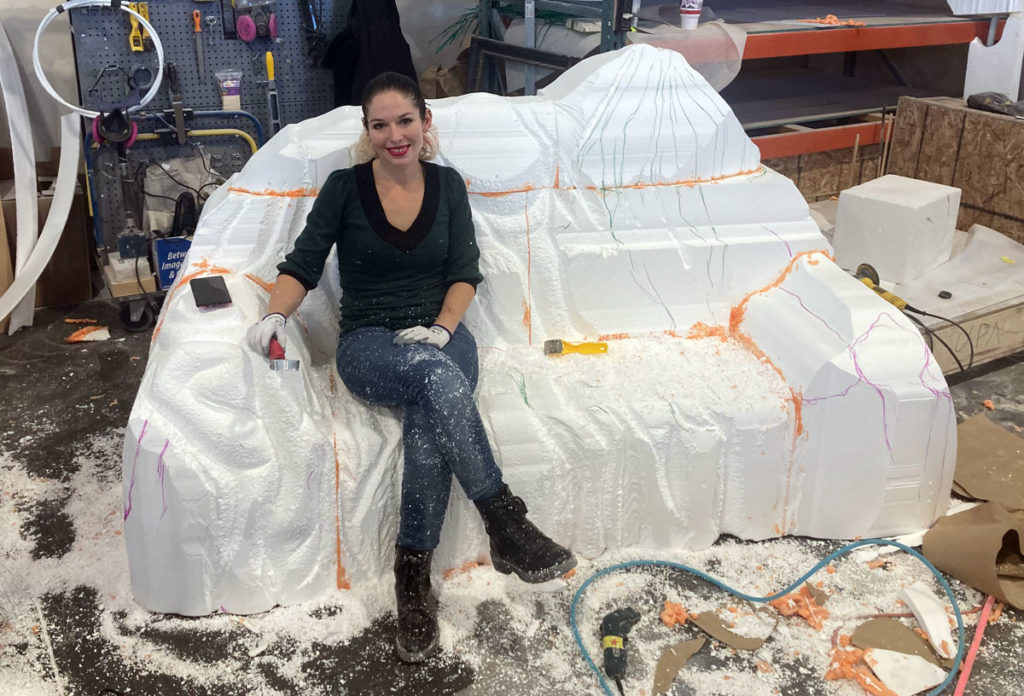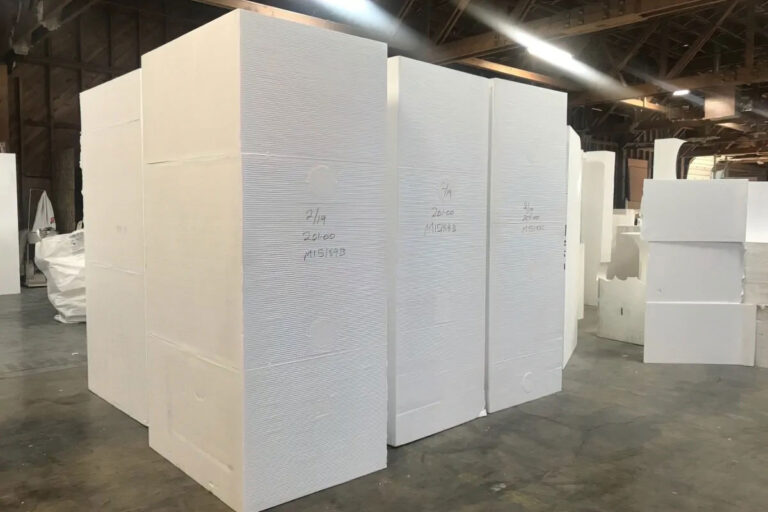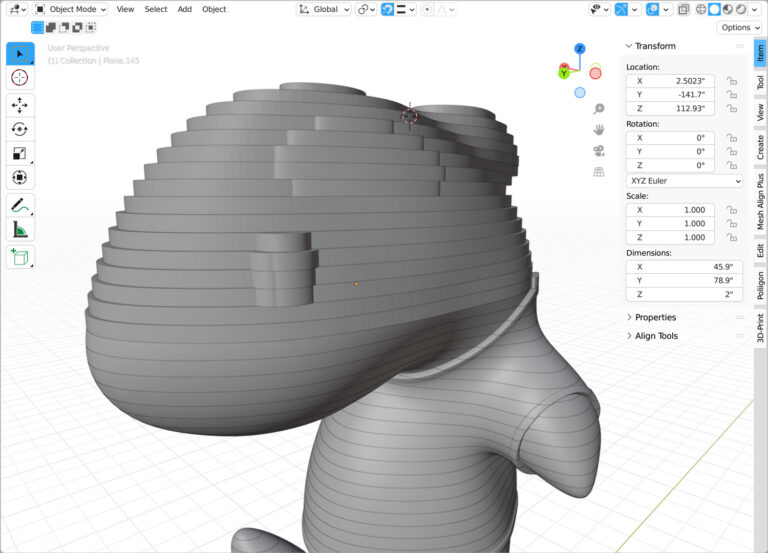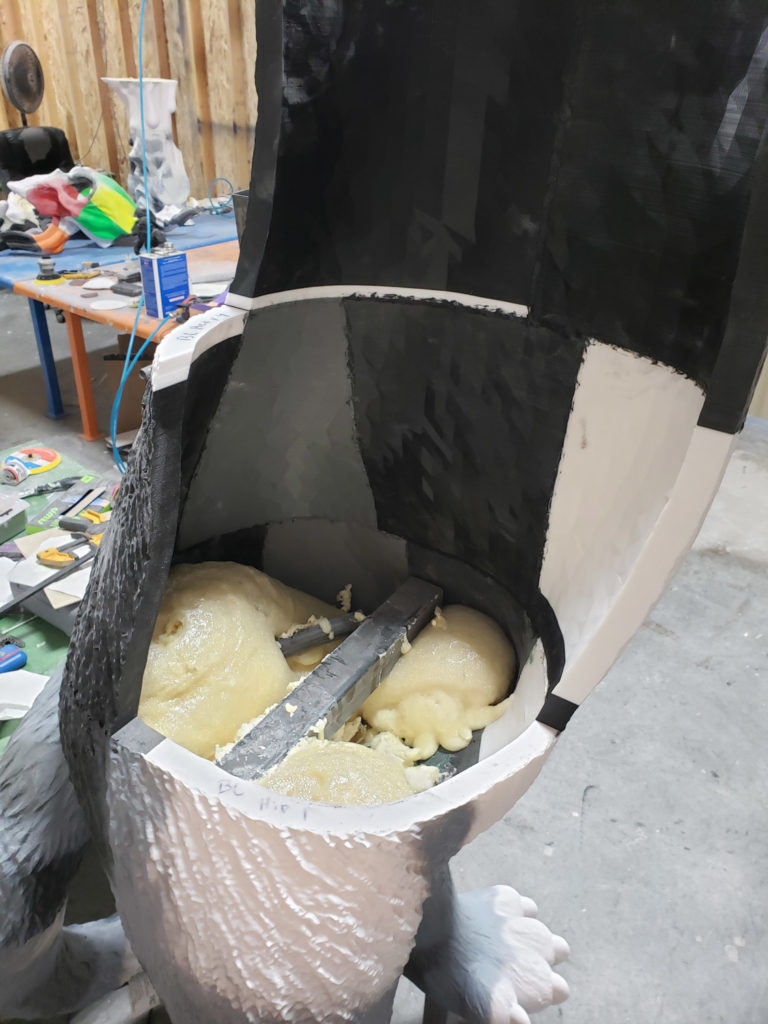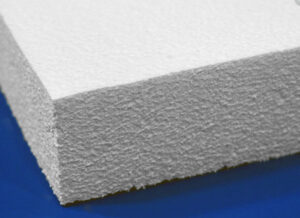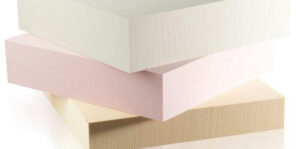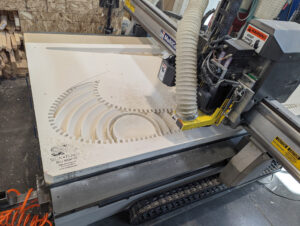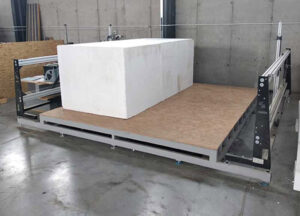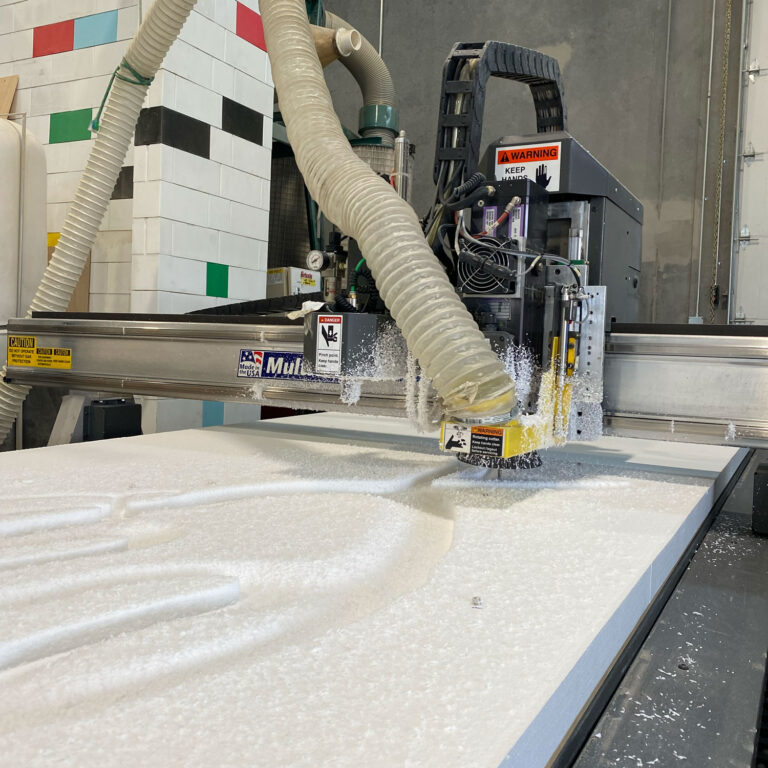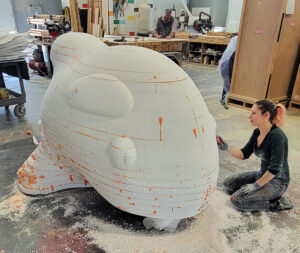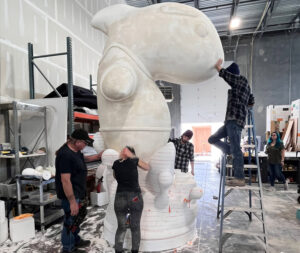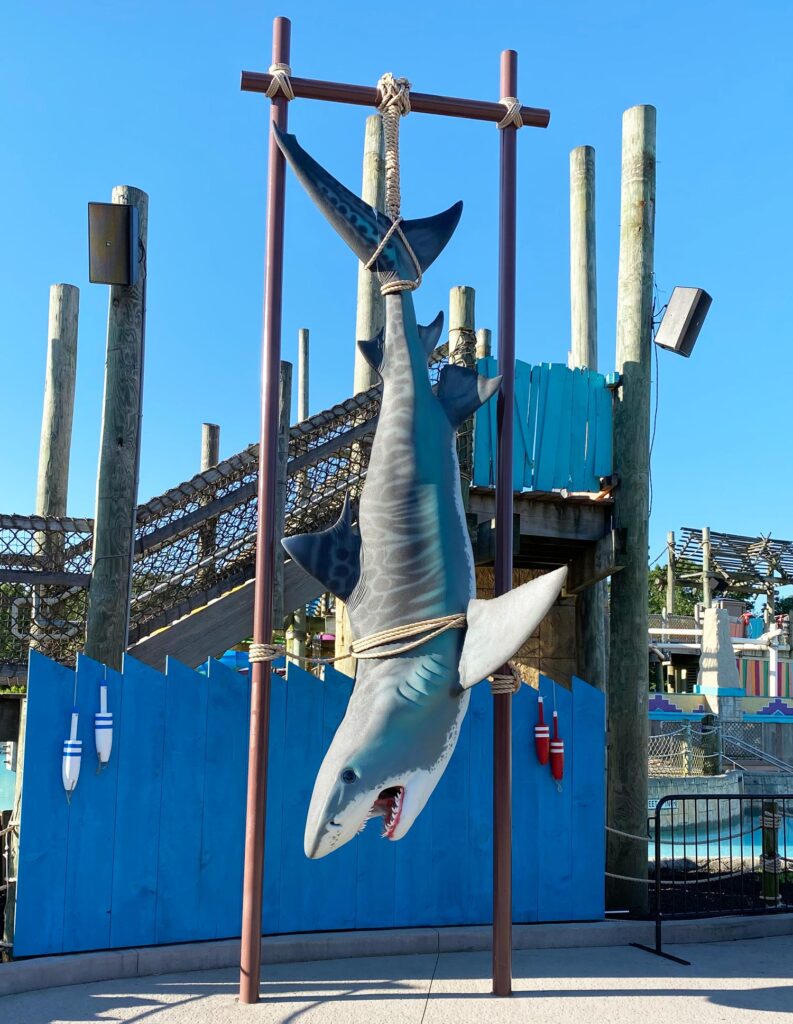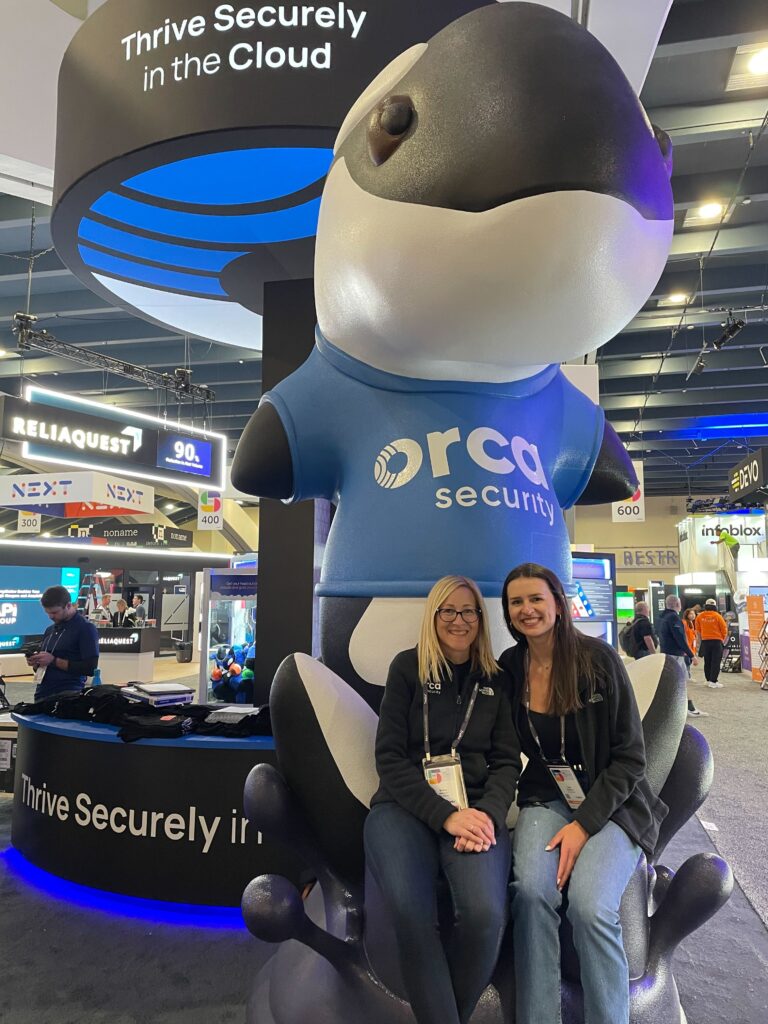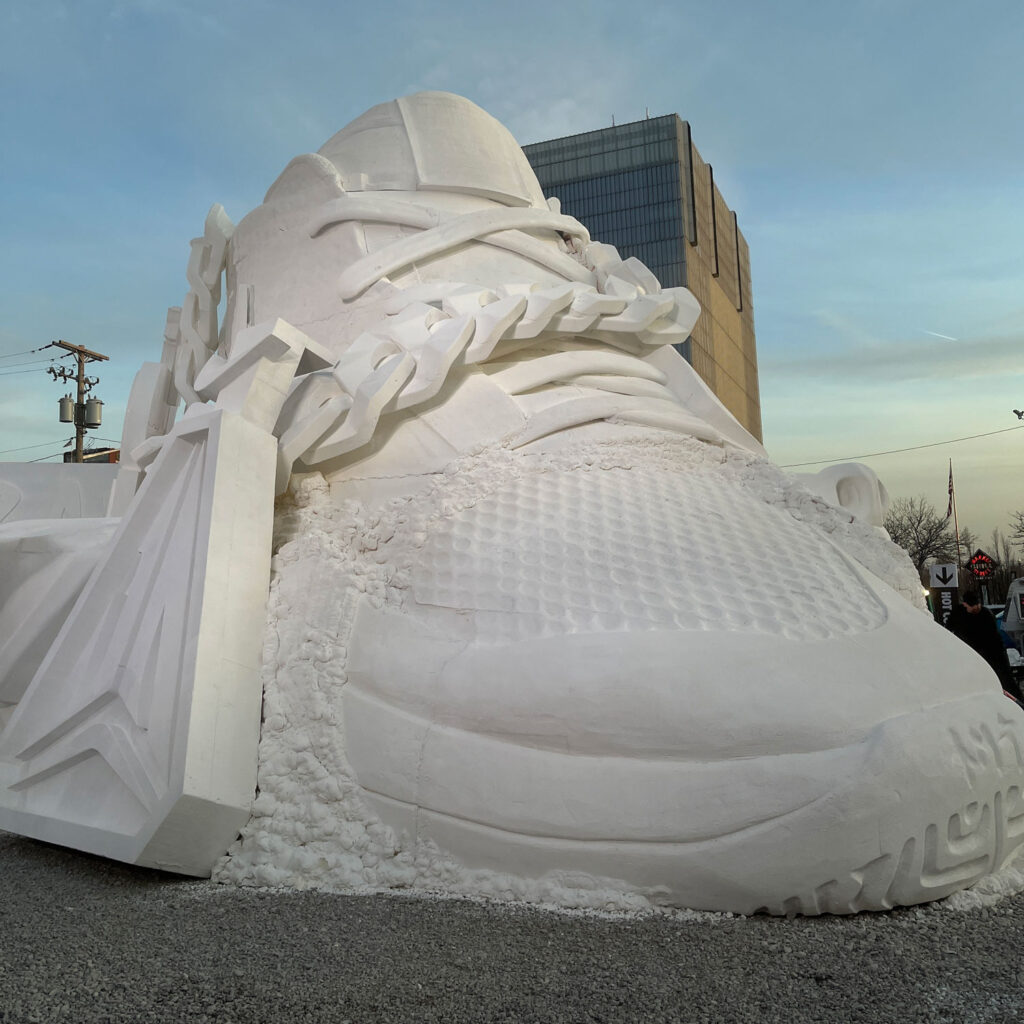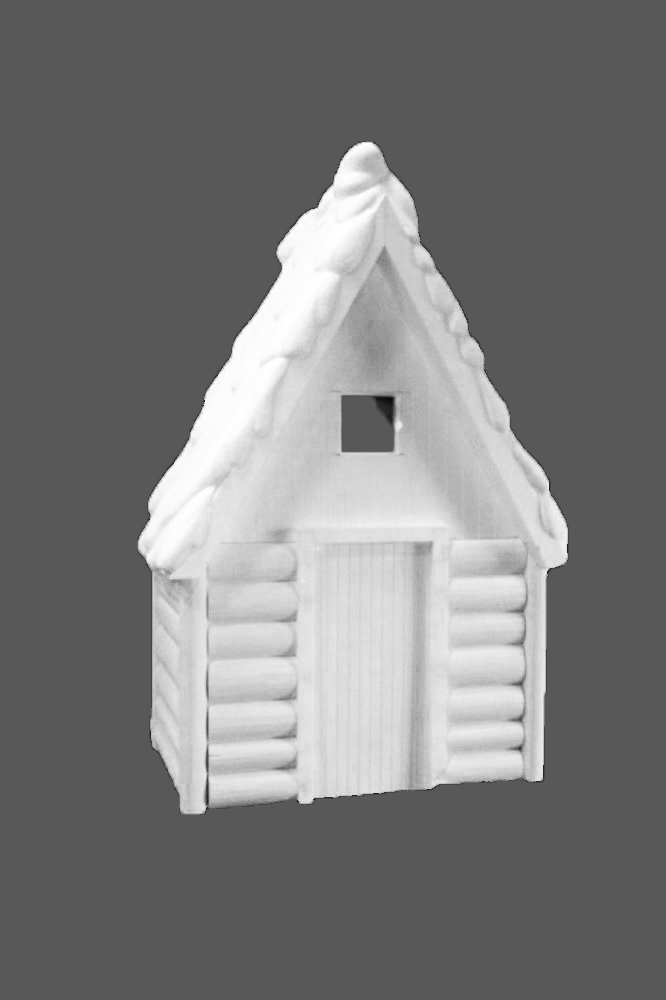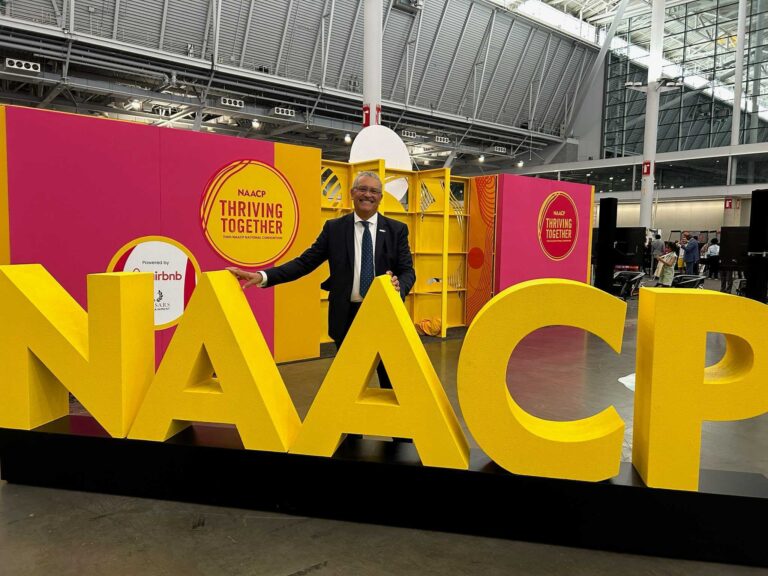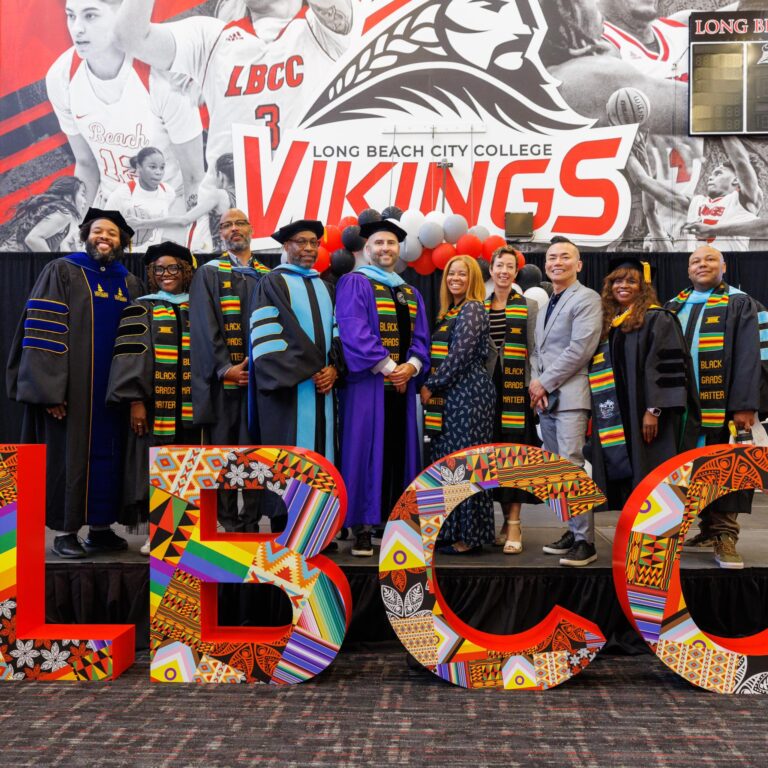3D Foam Carving
We carve custom 3D Foam Models
Table of Contents
Tradition + Technology
You may have asked yourself the question — how did they build that trade show character or that cool lobby display? The simple answer is “foam”, not the kind that your pillow is made from, but a much denser type of foam. In addition to the foam, it requires carving, special finishes, strength coatings, and a lot of different types of skill sets and knowledge to carve these unique and custom sculptures. Carving foam models (from small to extremely large) can be used in just about anything you can imagine – shapes, letters, props, and characters.
Imagine starting with an 8′ tall block of white foam and carving it into a colorful and detailed piece of art. Most of us have seen the movie Groundhog Day where Bill Murray is carving an ice sculpture of Andy MacDowell’s face. The finished masterpiece is beautiful. At WhiteClouds, we hand-carve foam sculptures. We can also use foam cutters and CNC equipment to automate much of the 3D foam carving process.
Foam is one of the most popular mediums for carving and sculpting — an art form that produces fast and awesome looking sculptures. Whether for trade shows, museums, theme parks and attractions, retail stores, office complexes, lobby displays, faux landscape, or special events; carved foam sculptures can provide a realistic awe-inspiring finished product.
Carving Foam
Preparation/Setup
Every 3D foam carving project begins with a 3D model. A 3D model is built by our in-house designers using modeling software to create a digital file. Initially, these digital files are used to validate what we are building matches the expectations of our customers. This file is then used to begin the planning and mapping out of the sculpture. The larger the sculpture, the more critical the file becomes. Many times, large sections of foam are glued together to form even larger structures before the carving takes place.
Most carvers draw a grid system on the foam before starting the carving process. This grid system can be accomplished a number of different ways – free-hand drawing, using a maquette (French word for scale model) as a guide, printing scaled up gridlines from a 3D design and applying them to the foam, or projecting a lighted image from a 3D design onto the foam and then tracing the model.
Internal Structures
For larger carvings or sculptures requiring movement or multiple installations, we may fabricate a steel or aluminum framework used to provide strength and portability for the finished project. These rigid frameworks are designed as part of the 3D model. The choice of steel or aluminum and the size of these frameworks are usually dictated by the strength and weight requirements. They may be permanently welded together or installed with removable aspects, similar to the plumbing under your kitchen sink. Sometimes the frameworks are used to suspend the finished sculpture to a ceiling. Foam can be easily attached to these strong structures by the use of special foam glues.
Examples of 3D Carved Foam
Read these full case studies that show the entire process start to finish of some of our foam sculpture projects:
Tiger Shark Amusement Park Prop
Rainforest Cafe sign at Disney World’s Animal Kingdom
Giant Nike Jo Morant Shoe ‘Snow’ Sculpture
Giant Orca Company Mascot Sculpture
Below are other examples of 3D carved foam sculptures, showing before and after images.
Technology and Materials
Today’s technologies enable the carving of more impressive next-generation models. Combining tried-and-tested technologies of foam carving, sculpting, cutting, and new 3D printing capabilities, enable model makers to build some pretty awesome models.
Types of Foam
We use primarily two types of foam: high-density and expanded polystyrene (EPS). High-density foam is used in many of our models where a heavier material is required, such as architectural and terrain models and many props. It is a much stronger foam, but is very difficult to hand-carve. Usually, high-density foam is used in conjunction with CNC machines doing the automated carving.
EPS (Expanded Polystyrene) is used for most of the hand-carving of our scupltures, this is typically the white foam. Some carvers will use XPS (extruded polystyrene) foam. This is sometimes called “blue foam” or “pink foam” and also by its most popular brand name — Styrofoam. XPS can be easily purchased at your local hardware or home improvement store. EPS is easy to use. Additional functionality that is easy to implement using EPS foam products is the insertion of dowels, PVC, or metal rods to give the carved sculpture additional strength and support.
Common densities of EPS foam are 1lb, 2lb, and 3lb. These weights define how much the finished foam weighs per cubic foot. Other special densities can also be carved, some as small as .5 lbs. up to 6 lbs. EPS foam comes in large white blocks that can weigh anywhere from 300 to 900 pounds. 2lb density EPS foam works well for the best combination of affordability, ease of carving and manipulation, and durability to carve fine details.
Foam Carving Equipment
Once you are ready to begin carving, the choice of tools can make the job easy or very difficult. Choose wisely. Foam can be cut with heated wires, cut with a band saw, carved on a CNC cutter, or can be carved with larger electric chain saws for the heavy cutting. Then you can do finer carving and sanding with the use of many different types of small hand tools such as “Dremel” tools, die grinders, electric knives, handsaws, snap-blade knives, saws, rasps, surforms, and many others. Even the hand carving tools have thin wires with electricity flowing through them to melt the foam, very much like a hot knife going through butter. Many of the tools with electrically heated wires can easily be bent to make custom carving easier.
Having the right equipment makes carving foam much easier. Having the right skill sets can also make carving foam much easier. Some complementary skills in artistry and model-making can also be very helpful. As you can imagine, this foam carving process can get very messy very quickly.
Finishes
There is always a debate when carving foam sculptures. What is harder? The actual carving of the sculpture or applying the finish to give the sculpture all of its beauty. Taking raw foam and making it look like it is NOT made from foam is probably the most difficult part of a carving. There are a few considerations:
Strength and durability — Foam is easily broken. Much thought and planning have to be given for what type of strength coating needs to be applied. Different levels of durability can be accomplished with soft-shell coatings, hard-shell coatings, and sealers such as urethane, polyurea, eplison, XTC, polyurethane, and many others. Fiberglass coatings can also be applied if the finished carved sculpture is going to remain outdoors. Coatings such as Habitat can also be applied if strength is necessary along with special requirements to be underwater.
Texture — What type of texture does the final carved piece need to feel like? Does it need to be smooth and the edges of the foam filled in? If so, some type of filler will be required, this could be wood fillers, sheetrock fillers, or some type of epoxy coating. If it requires a rough finish, that can be accomplished with coatings such as cementitious or polyurea type finishes. Does it need to look like wrinkled skin? Then you can emulate this by adding acrylic monomers. Using epoxy clay enables you to add/carve extreme detail into your foam model that would have been difficult directly carving into the foam.
Finish — Does the final carved sculpture need to be painted, or wrapped in vinyl, laminated, or a very special finish? Does the paint finish need to be similar to painted house walls or does it need an automotive-type finish? Does weather-proofing or temperature play into this? Does the carved sculpture need to be installed underwater? Latex, acrylic, and special sealers should all be considered along with indoor/outdoor requirements, humidity requirements, and the natural glare of lighting/sunlight. Special attachements to the carved sculpture can be applied, such as greenery or even candy/food finishes.
The first step in any of the finish work is typically done by sealing the surface then applying protective, textured, or finish coatings. Another option is to just specify to WhiteClouds what you would like done, and we would be glad to do it for you. WhiteClouds has:
- Professional Creations — We have a team of carvers, designers, artists, model-makers, painters, air-brushers, sculptors, carpenters, and welders to fabricate that imaginative, immersive, and experimental 3D foam model.
- No project is too large or too small, from a 2′ small statue to a large 50′ tall animal sculpture.If you can design it, we can create a physical model of it. If you can’t design it, we have a team of design professionals who can. We can work with preparing 3D models from scans, drawings, photos, and even napkins.
- Technologies include Foam Fabrication, Hot Wiring, CNC Cutting, Laser Cutting, Welding, and 6 different 3D Printing technologies for rapid prototyping or production models.
- Foam themed models, foam letters, foam numbers, foam architectural models, foam props, foam characters, and foam sculptures can all be used to help expand what you are trying to build with foam fabrication.
- Foam carving may use other techniques including epoxy clay sculpting, molds, and 3D printing to develop the best 3D foam model.
- Did we mention, we have 60,000 square feet of production facilities in Utah, including the largest capacity full-color 3D printing in the world.
- Portability and/or mobility may be an issue, especially with trade show displays. We have the team that can create your carved trade show foam models including custom electronics, lighting, and sound.
- Our in-house spray booth gives us flexibility in different types and grades of paint and finishing capabilities.
Foam Usage
3D Characters
Carving 3D characters are some of the coolest sculptures we do. Everyone has their favorite character, whether from a movie character, cartoon character, or video game character. We get excited to see them, especially when the finish work is out of this world and they really come to life. With the ability to carve both small and large characters, either size captures your attention. The really large characters can be very intimidating as they tower over you. These are instant booth magnets at trade shows. You can imagine people wanting that favorite selfie picture with their favorite character.
Carved foam is a great solution for adding realistic accessories and backgrounds to 3D characters. Carved foam is great for the creation of props, armor, weapons, creatures, and anything that needs to be fabricated quickly and inexpensively. It is very common to see carved foam being used to create entire movie sets, theater background sets, haunted displays, amusement park backgrounds and structures, and church theming rooms to name a few. Foam allows for realistic scenery creation or construction of buildings with elaborate background sets. Foam provides the benefits of being lightweight, economical, and efficient in terms of fabrication times. Custom shapes can be created to support any type of imagination.
Architecture
Most of the time architectural models and terrain models are fabricated with 3D printing, and traditional model-making techniques. There are times when special aspects of the project require some carving to combine all of the elements of the model.
It is often very hard to visualize a 3D object, like a home or building, based on 2D images or computer simulations. An architectural model tells the entire story. Whether you are communicating and collaborating with the builder, homeowners, investors, or planning commission, an architectural model accurately portrays the idea, and concerns can be addressed and resolved before construction begins, saving time and thousands of dollars.
These carved masterpiece models are used in the planning, design, fundraising, construction, marketing, and sales process of homes, office spaces, retail spaces, hotels, medical and government buildings, educational institutions, resorts, churches, and many more. Larger and more expansive full-room dioramas can also have elements of foam carving.
Carved foam models are also commonly used to build all types of architectural elements in new construction from columns, trim, crown molding, arches, caps, brackets, special molding, ceiling accents, railings, shutters, louvres, corbels, medallions, panels, and much more. This special architectural fabrication can be used for outdoor pools, fireplaces, all exterior features of new construction, and even specail theming in rooms or the backyard. A little bit of imagination can bring elegance and beauty to any architectural construction project. These carved foam models along with Polyurethane and sometimes cement, can create awesome looking architectural structures.
Large Letters
Carving large letters and large numbers are an ideal way to make a bold emphasis on a brand, product, or message. There are many uses for these types of oversized displays. At trade shows, these huge sculptures serve as a centerpiece to attract large crowds and to stand-out amongst myraids of other trade show booths. Retail stores can use them for visual marketing and product branding. Special events can use these large letters and large numbers to clearly identify the main message points.
The craze today is the ever-popular selfie — various uses of large foam letters can immerse you right into the middle of the letters and numbers and increase your social media effectiveness.
Trade Show Displays
It is often hard to visual a 3D object, like a new product, equipment, or facility, based on 2D images. A physical 3D trade show model tells the entire story. A high-quality model like a giant shoe directly engages consumers and invites them to participate in a brand’s experiential marketing. Imagine a themed-throne that just asks for attendees to come sit and have their selfie taken.
Now, with hand-carving techniques combined with modern fabrication technologies, trade show models are created in less time, are more affordable, more accurate, and have a higher level of detail than ever before. Models with interactive features, moving parts, and advanced lighting scenarios set your experience apart, and attracts the attention of trade show attendees, allowing you to create immediate engagement and a long-lasting impression.
Trade Show Models are an important part of a company’s experience design, and are one of the best ways for a company to showcase and demonstrate their latest products and services. Many options are available from props to cutaway models to industrial models.
custom foam sculpted prop projects by WhiteClouds
Get a Free Price Estimate for 3D Models
Custom Fabrication Workflow

